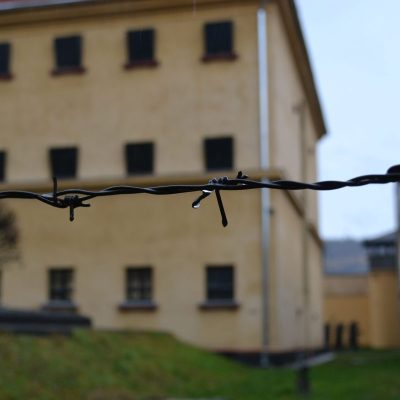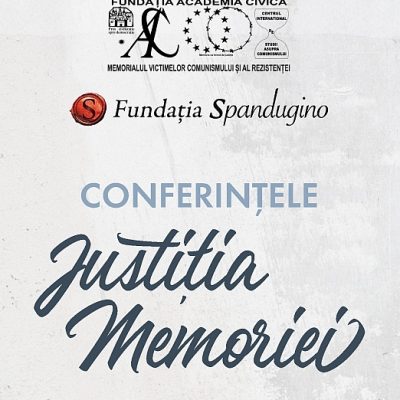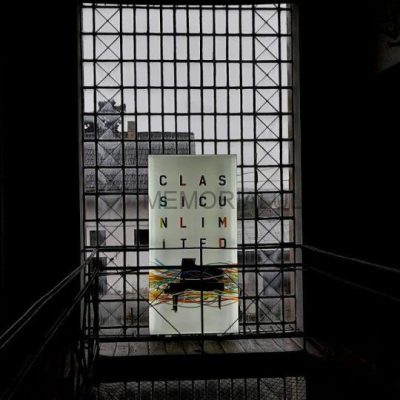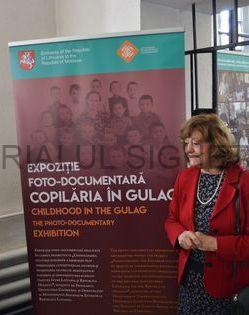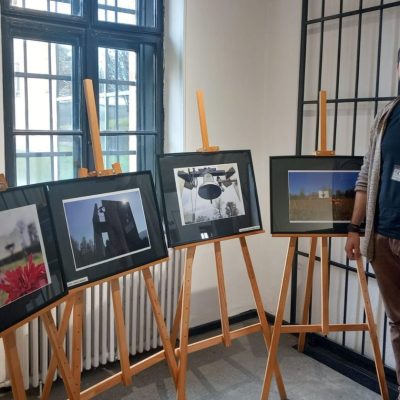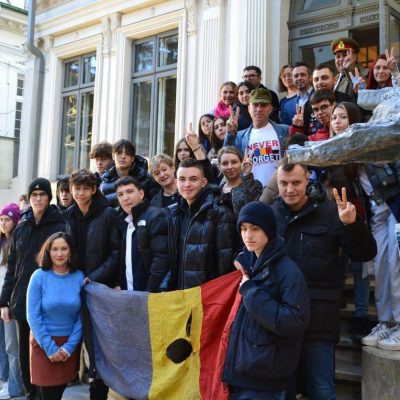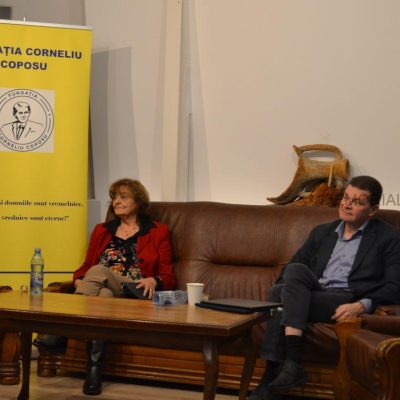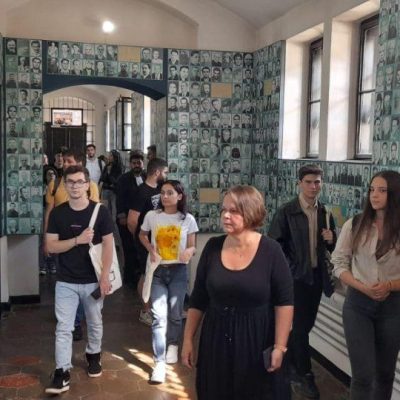an exhibition of the Sighet Memorial to the Victims of Communism
Curator: Virginia Ion
Exhibition Design: Zeppelin Design (Cosmina Goagea, Justin Baroncea, Andrei Angelescu, Emanuel Birtea, Cristina Ginara, Ioana Naniș, Radu Manelici, Alex Ivanof, Ioan Cernei, Constantin Goagea)
As any other totalitarian regime, Communism did not take into account factors such as age, gender, state of health or cultural level of the people it repressed. ‘Enemies of the people’ weren’t only adults, but also children, weren’t only men, but also women. Countrywomen and female aristocrats, intellectual and simple women, older women, teenagers or even girls, pregnant and postnatal women, as well as women with breastfed children were considered to pose a potential threat to the regime.
According to statistics by CISAC of the Sighet Memorial, 5.31% of all individuals detained on political grounds in Communist Romania were women. They were either passed a sentence by a military court, or were simply arrested based on lists issued by the Romanian Ministry of the Interior, having had received so-called ‘administrative sentences’. Thousands of women endured the detention conditions in Communist prisons and camps in Romania. Reasons for their imprisonment varied. Some women were deemed to be a threat to the social order of the Communist state, others suffered through prison as mothers, wives or daughters of men who were detained.
Apart from them, thousands of other women were deported: in 1945 to Donbas, as German ethnics; in the night of March 2 to March 3, 1949, as female landlords; following the revolts against collectivization, as women peasants; in the night of June 17 to June 18, 1951, of the Black Pentecost… Furthermore, thousands of women from Bessarabia and Bukovina were deported by Soviet authorities to Siberia, as Romanian women.
The space dedicated to this exhibition is fatally limited and constrained to entail only several dozen stories of the thousands of tragedies and dramas. Thus the following question arises: is there any scientific method that could perhaps be employed to make a selection of these broken destinies, without doing any injustice to those that remain unknown? That leaves us with the task of making as much of a diverse selection as possible in terms of profession, social status and age, in the hope that visitors will understand that behind every name in the exhibition there are tens or hundreds of similar destinies.
October 2021- September 2022: The exhibition Women ‘Enemies of the People’, opened at the Bucharest Exhibition Space of the Sighet Memorial to the Victims of Communism (no 66, JL Calderon street),
Photo: Andrei Mărgulescu
The documentation of this exhibition is mainly based on the existing data within the Archive of the International Centre for Studies into Communism, part of the Memorial to the Victims of Communism and of the Resistance
The excerpts of oral history testimonies belong to the Oral History Archive of the Memorial to the Victims of Communism and of the Resistance
Excerpt from the following volumes were also used:
“Să ne răsculăm că pământu’ ne ţine pi toţi!” Revolte împotriva colectivizării din Nordul Moldovei Revolte împotriva colectivizării din Nordul Moldovei [“Let’s revolt, there’s place for all of us on Earth!” Rebellions against collectivization in Northern Moldova], testimonies taken by Daniel Popa and Zenovia Pavlică, Ed. Fundaţiei Academia Civică, Bucharest, 2019
Povestea Elisabetei Rizea din Nucşoara. Mărturia lui Cornel Drăgoi [The Story of Elisabeta Rizea from Nucşoara. The testimony by Cornel Drăgoi], taken and edited by Irina Nicolau and Theodor Niţu, Ed. Humanitas, Bucharest, 1993
Lavinia Betea, „Am făcut Jilava în pantofi de vară”. Convorbiri cu Ioana Berindei [“I went to Jilava Prison in summer shoes”. Conversations with Ioana Berindei], Ed. Compania, Bucharest, 2006
Lena Constante, Evadarea imposibilă. Penitenciarul politic de femei Miercurea-Ciuc, 1957-1961 [Impossible escape. The Female Political Prison in Miercurea-Ciuc, 1957-1961], Ed. Humanitas, Bucharest, 2013
Adriana Georgescu, La început a fost sfârşitul [In the Beginning was the End], 2nd revised edition, Memoria Cultural Foundation, Bucharest, 1999
Lucreţia Jurj Costescu, Destine în rezistenţă (I) [Fates of Resistance (I)], în Armand Goşu (editor), School of Memory 2003, Ed. Fundaţiei Academia Civică, 2003, pp. 77-113
Oana Orlea, „Ia-ţi boarfele şi mişcă!” [Get your stuff and move it], interview by Mariana Marin, Ed. Cartea Românească, Bucharest, 1991
Romulus Rusan in collaboration with Andreea Cârstea and Corina Cimpoieru, „O zi de toamnă, cândva… (15 noiembrie 1987, Brașov)” [An Autumn Day, Someday… (November 15, 1987, Brașov)], 2nd revised and extended edition, Ed. Fundaţiei Academia Civică, Bucharest, 2012
Aristina Pop-Săileanu, „«Să trăiască partizanii până vin americanii! » Povestiri din munți, din închisoare și din libertate” [«Long Live the Partisans Until the Americans Come!» Tales from the Mountains, from Behind Bars and Back to Freedom], Ed. Fundaţiei Academia Civică, Bucharest, 2008
Iuliana Preduţ, Speranţe încătuşate [Chained Hopes], available in Romanian at https://www.memorialsighet.ro/iuliana-predut-constantinescu-sperante-incatusate/
Annie Samuelli, Gratiile despărţitoare [The Wall Between], 2nd revised and extended edition, Memoria Cultural Foundation, Bucharest, 2001
Elena Spijavca, Munci şi zile în Bărăgan [Chores and days in the Bărăgan], Ed. Fundaţiei Academia Civică, Bucharest, 2004
Sabina Wurmbrand, Nobleţea suferinţei [The Nobleness of Suffering], Ed. Stephanus, Bucharest, 2002
Photos used in this exhibition were collected along the years in the Photo Archive of the Memorial to the Victims of Communism and of the Resistance.






















